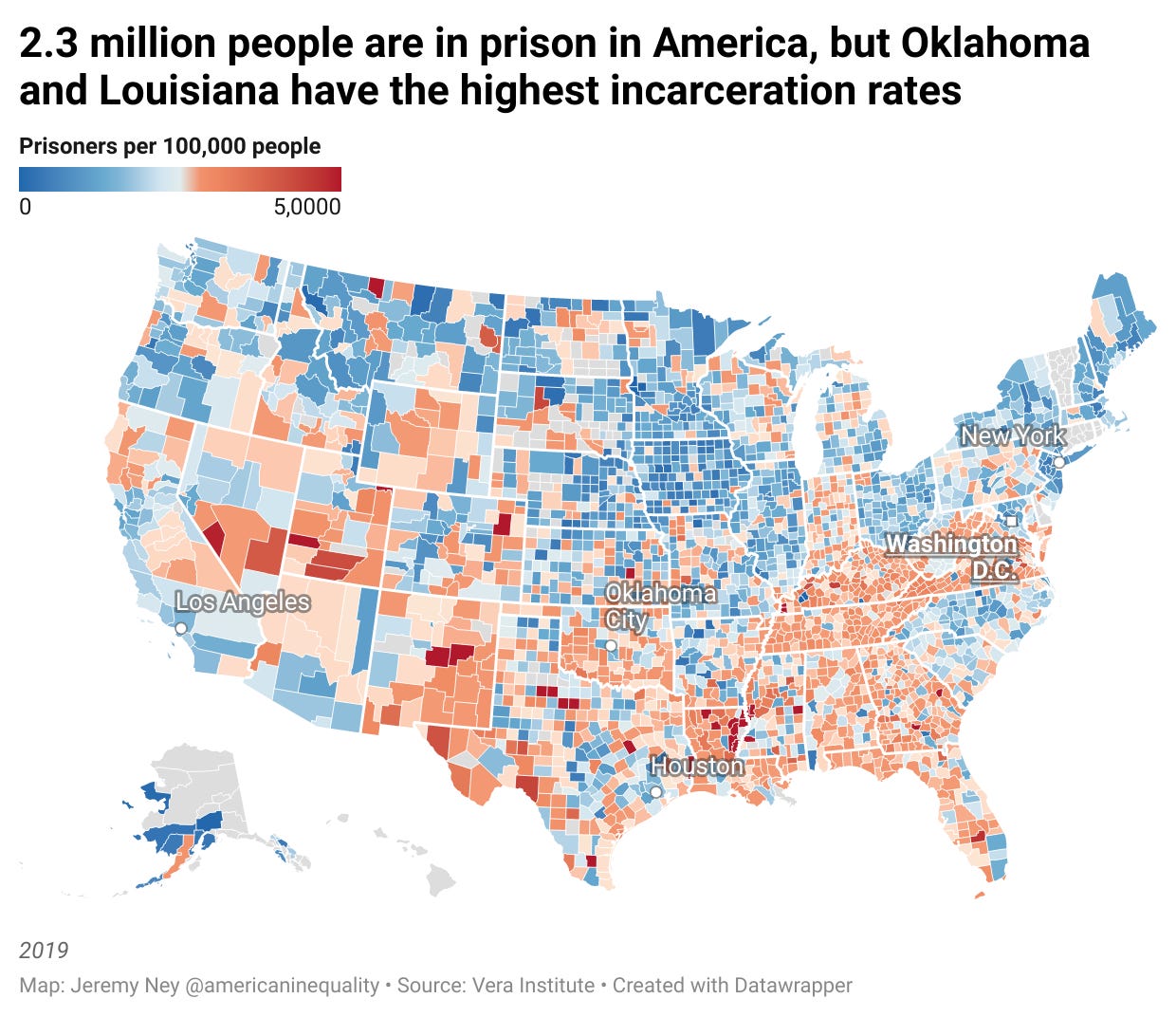Incarceration and inequality
375 US counties incarcerate at least 20 Black people for every 1 White person and Oklahoma has a higher incarceration rate than Russia or Rwanda
Keep reading with a 7-day free trial
Subscribe to American Inequality to keep reading this post and get 7 days of free access to the full post archives.



